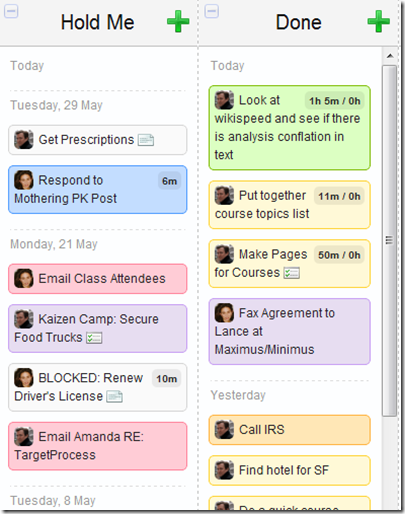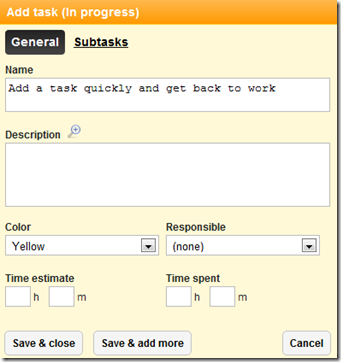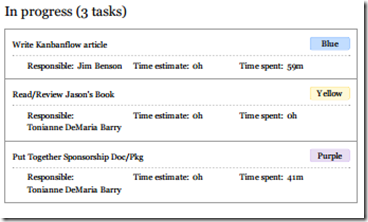It’s a horse! It’s a cow! It’s a cotton ball!
Okay, we’ve reached the 10th episode of Lean Muppets, and the last one, I’m sorry to say. Over the last six weeks, I’ve had great conversations that started with, “You know where Fozzie ….” and ended with deep thoughts about lean. I’m taking that as a sign of success.So in this final installment we find Kermit as a middle manager. He has empowered his staff to provide value by employing an elegant system.His system is “get employee to guess what is in a box and reward them by getting what is in the box.”The payoff of receiving the thing in the box is a fiscal payoff. We call this an extrinsic reward – or a reward that has an external value to the recipient. For example, if I pay you a salary, that is an extrinsic reward. You will value it, perhaps even need it, but it’s value is a market value. If I pay you $90,000 a year to work at an awesome job, you might consider it. If I paid you, $500 a year, you would likely slap me – regardless of how awesome the job is.This is opposed to an intrinsic motivator. This type of motivation appeals to what is inside of us – what we love. I don’t have to pay you to go see a movie with me. Nor should I have to pay you to read a book. You do these things because you like movies or you want to learn. These intrinsic motivators can outweigh or exacerbate discrepancies in external motivators. So, if you could make $110,000 a year in a crappy job or $90,000 in an awesome one … the better lifestyle and less stress might make $90,000 more attractive.In this video, Kermit has set up a system with an extrinsic reward and no intrinsic rewards at all. Kermit feels that the reward of what is in the box is enough to buy his employees’ time. Unfortunately for him, his employee quickly surmises that the contents of the box doesn’t match with the currency he trades in. Cookie Monster solely deals in cookies.The moment Cookie Monster states that he doesn’t want to participate, Kermit exercises positional power and lays down some rules.Rule 1: You Must Guess What is in the BoxAt first Cookie Monster negotiates. The rule now places them in an adversarial role. Kermit is laying down the law, Cookie Monster responds with “Reactance.” Cookie Monster says, “I don’t like being told what to do, you’re going to have to sweeten the pot. Given that I only trade in Cookies, I demand you give me a Cookie.”Getting the system to work is very important to Kermit, so he gives in and says if Cookie Monster guesses what’s in the box, he will give him a cookie.Rule 2: You Must Guess Using CluesCookie Monster still doesn’t care one lick about Kermit’s system, he just wants a Cookie. So he starts guessing what is in the box. “A horse! A cow! A pogo stick! A Cotton Ball!”But that’s not good enough for President K. the Frog, he now tells Cookie Monster that he needs to logically guess with clues.Kermit gives him two clues that sound like a Cookie – You can eat it and it is round. So Cookie Monster draws on his vast expertise in cookie systems and comes to the logical conclusion that it is a cookie. That’s Cookie Monster’s world view – that’s where he’s coming from. You can’t make cookie monster eat raw fruit.Rule 3: You Can’t Be Told What It IsFinally Kermit gives up and tells him that it is an orange. He breaks his own system. When he does that, the unwilling participants in the system hold him to his own rules.Because Cookie Monster never really understood why the system was there, or what it was doing, he also couldn’t tell when it broke down. Cookie Monster lacked systemic clarity.Kermit was so caught up in the result he wanted from his system, he never taught anyone why the system was there in the first place.
What This Means For Lean
When people don’t understand a system and are forced to participate in it, they spend a lot of time trying to learn and negotiate the rules. They first must learn “how” to negotiate their system. If the system is complex enough, or if there is no motivation, they may never get around to learning '”why” they are doing those things. If people don’t understand the why, they have no way of knowing if the how is really working. Continuous improvement is likely impossible. Systems will begin to break down. When the systems do break down, rather than fixing them, the Cookie Monsters of the world will complain, lament, and game the breaking system for their personal benefit.And why do they do that? Why do perfectly nice Cookie Monsters game dying systems like this? --> Because the system never respected them either.Build systems that respect those who will be impacted by the system. This is tenth and final (oh no!) in a series of Lean Muppet Posts. For a list of Lean Muppet posts and an explanation of why we did this, look here -> Lean Muppets Introduction













